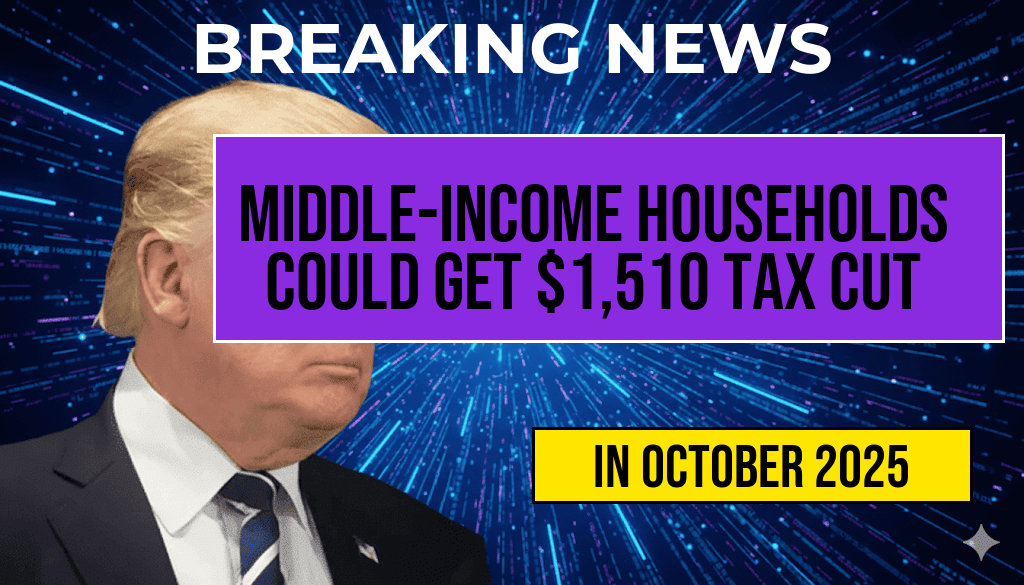In a significant development for American families, recent tax proposals indicate that middle-income households could see an average tax cut of approximately $1,510. This potential reduction comes as lawmakers in Washington work to finalize the details of the upcoming tax legislation, which aims to provide financial relief amid rising living costs. The proposed changes are designed to simplify the tax code and enhance affordability for families earning between $50,000 and $100,000 annually. This demographic has faced increasing economic pressures, making the anticipated tax cuts particularly timely as they deal with challenges related to inflation and stagnant wages.
Details of the Proposed Tax Cuts
The tax cuts for middle-income households are being discussed as part of a broader strategy to stimulate the economy. The proposed measures would not only reduce tax liabilities but also adjust various deductions and credits to better reflect current economic realities.
Key Features of the Tax Proposal
- Standard Deduction Increase: The proposal includes an increase in the standard deduction, allowing families to retain more of their earnings.
- Enhanced Child Tax Credit: Families with children may benefit from an expanded Child Tax Credit, which aims to support childcare costs.
- Adjustment of Tax Brackets: Adjustments to tax brackets could further lower the tax burden on middle-income earners.
Potential Economic Impact
Economists suggest that these tax cuts could have a positive ripple effect on the economy. By increasing disposable income for middle-income households, consumer spending may rise, which is vital for economic growth. As families have more money to spend, businesses could see increased demand for goods and services, stimulating further job creation.
Considerations and Concerns
- Long-term Fiscal Health: Critics of the tax cuts warn that such measures could lead to larger deficits if not balanced by corresponding revenue increases elsewhere.
- Equity Among Income Groups: Some analysts argue that the benefits should be more evenly distributed across all income levels to ensure fairness in the tax system.
Legislative Progress
As of now, the tax proposal is still in the negotiation phase. Lawmakers from both parties are discussing how to balance the need for tax relief with the necessity of maintaining government revenue. Meetings are scheduled to address concerns raised by various stakeholders, including business leaders and advocacy groups, who are keen on ensuring that the legislation supports economic recovery without compromising fiscal responsibility.
Public Reaction
Public sentiment regarding the proposed tax cuts has been mixed. Many families are hopeful about the potential for increased take-home pay, particularly in light of ongoing economic challenges. However, some individuals express skepticism about whether the cuts will truly materialize, given the complexities of the legislative process.
Comparative Analysis
| Income Bracket | Average Tax Cut |
|---|---|
| $50,000 – $75,000 | $1,510 |
| $75,001 – $100,000 | $1,200 |
| Below $50,000 | $800 |
Looking Ahead
As discussions continue, the outcome of this proposed tax legislation remains uncertain. Analysts will be closely monitoring the developments to assess their implications for middle-income households and the broader economy. Should the tax cuts move forward, families across the nation could benefit significantly, potentially reshaping their financial landscapes in the coming years.
For further details on tax policies and their implications, visit Forbes or check out the information on Wikipedia.
Frequently Asked Questions
What is the average tax cut for middle-income households?
The average tax cut for middle-income households is reported to be around $1,510.
Who qualifies as a middle-income household?
A middle-income household is typically defined based on the median income range in a given area, often falling between specific income brackets set by governmental guidelines.
How will the tax cuts affect the overall economy?
The tax cuts for middle-income households are expected to increase disposable income, which can lead to higher consumer spending and potentially stimulate economic growth.
When will these tax cuts take effect?
The tax cuts are expected to take effect in the upcoming tax year, but specific implementation dates may vary based on legislative approval and other factors.
Are there any conditions attached to these tax cuts?
While the tax cuts aim to benefit middle-income households, it is important to review any specific eligibility criteria or conditions that may apply, which can vary by state or locality.













